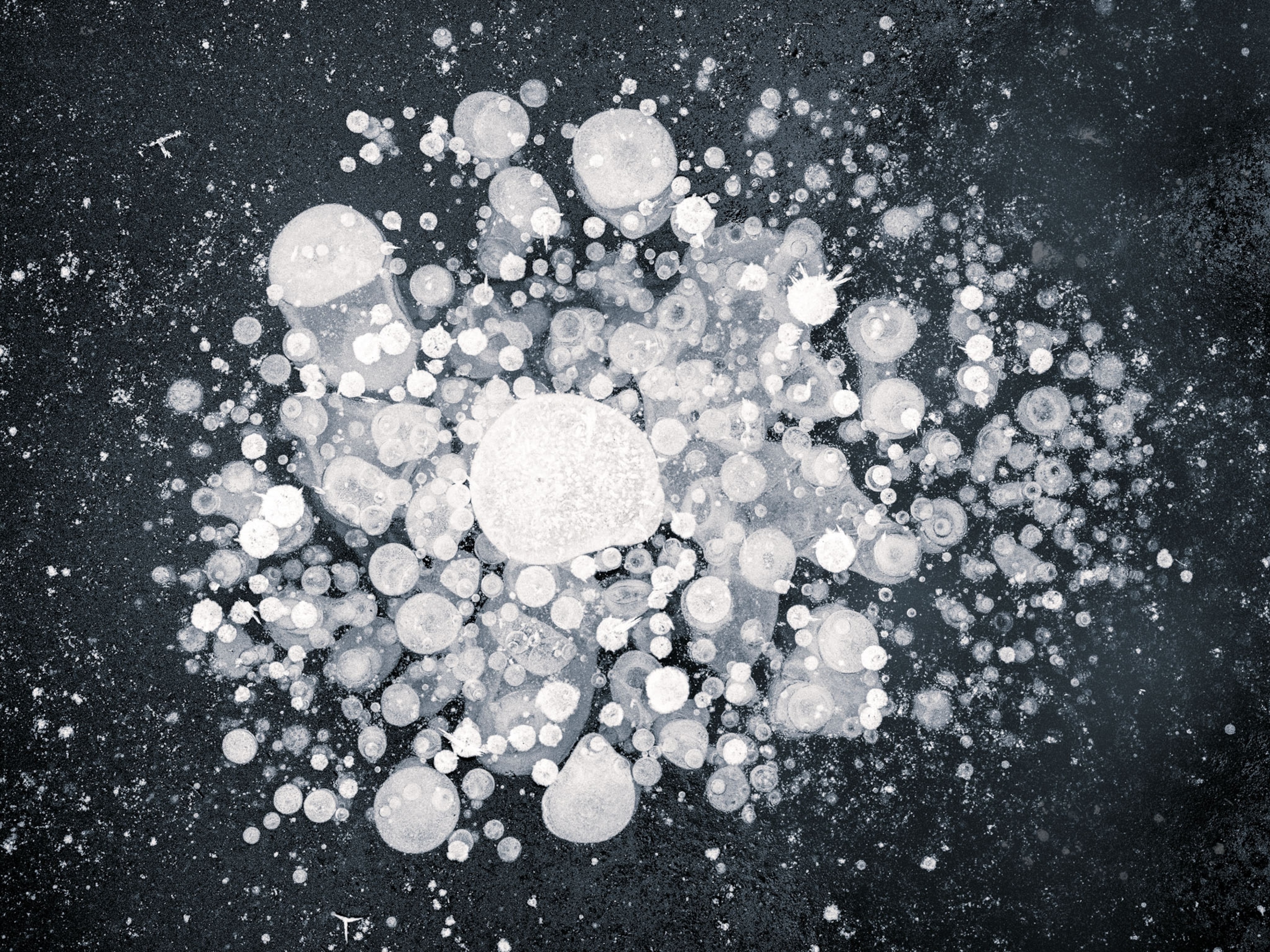Watch Bubbling Alaska Lakes Catch on Fire
Seeping methane is driving a global warming feedback loop.
Some Arctic lakes are starting to look like witches' cauldrons.
The above video shows an increasingly common site in northern latitudes. As global warming heats these areas up, the frozen ground is melting. And when permafrost turns from solid ground to looser mud, it releases gases that have been trapped inside.
Much of the gas is methane, which is produced by microbes that feed on prehistoric biological matter laid down before the last Ice Age. The methane bubbles up to the surface, sometimes gently and at other times violently. (Read a magazine feature on this topic.)
As the land softens, it can also slide and sink, sometimes causing damage on the surface to vegetation (see: drunken trees), or breaking buildings, pipelines, or roads. It can also cause depressions that fill with rainwater, which are called thermokarst lakes.
Scientists with the University of Alaska Fairbanks (UAF) and NASA’s Arctic Boreal Vulnerability Experiment (ABoVE) are measuring the release of methane from the melting Arctic, as the above video shows. The scientists measure bubbles from lakes, and even occasionally set the gas on fire to get a better sense of its composition (methane is flammable; see more photos of this).
The team combines these ground-based observations with satellite data to get a better sense of the effect this additional methane may be having on our atmosphere.
It's an important issue, because methane acts as a greenhouse gas, trapping more heat closer to the Earth. In fact, one molecule of methane is 25 times more powerful at trapping heat than a molecule of carbon dioxide (we hear so much more about carbon dioxide because there is a lot more of it in the atmosphere, but scientists think methane has an important role to play in climate).
"All that carbon was locked up safely in the permafrost freezer for tens of thousands of years," National Geographic Explorer and UAF professor Katey Walter Anthony previously said. "Now the freezer door is opening, releasing the carbon into Arctic lake bottoms."
The world's permafrost holds an estimated 950 billion tons of carbon. As it thaws, 50 billion tons of methane could enter the atmosphere from Siberian lakes alone.
"That's ten times more methane than the atmosphere holds right now," Walter Anthony said. "Since methane traps heat so efficiently, temperatures will rise higher, faster."
More warming means even more melting of the permafrost, resulting in the release of more methane, setting up a vicious cycle.
But Anthony has also been working on ways to try to harness the methane bubbling out of the ground for energy, particularly for off-the-grid communities who could most benefit from it. Success has been demonstrated in small-scale projects.





